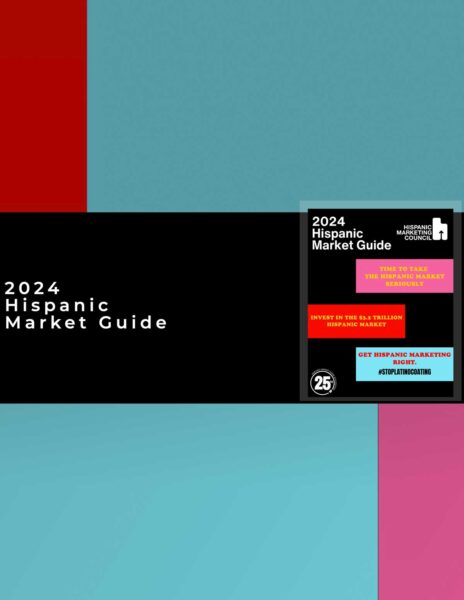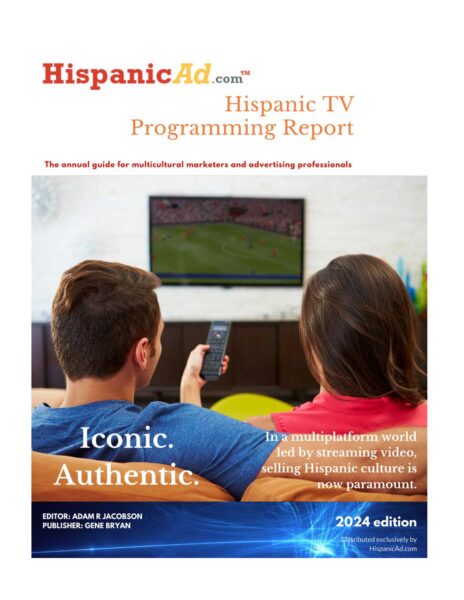Acculturation and the Hispanic Consumer.
September 15, 2012
The US Census Bureau reports that there were 50.6 million Hispanics in the United States in 2010; this represents 16% of the total US population. This is a 15 million increase over the 2000 population and represents 54.9% of the 27.3 million increase in the overall population (Ennis, Rios- Vargas & Albert, 2011). These census results have confirmed what researchers have been saying for many years: the Hispanic market segment is most certainly too big to ignore and will only continue to grow in size and importance over the years. It is predicted that their buying power will be approximately $1.3 trillion in just three years (Tsai and Li, 2012). Companies have now started to set their caps for this market but have quite a few challenges to contend with if they are to be successful.
Understanding the Hispanic / Latino identity remains the key to connecting with the Hispanic consumer but this is not as straightforward as it may appear as the Hispanic population is quite diverse. One of the issues that marketers have to take into account is the varying levels of acculturation of Hispanic consumers. Acculturation, as defined by Korzenny and Korzenny (2012) is how groups and individuals orient themselves to deal with the process of culture contact and change. Hispanics from various countries of origin go through this process when they migrate to the United States. They go through the process of culture shock and finally adjust (on some level) to life in the United States. Persons at different stages in the process exhibit different behaviors and have varying perspectives.
Some theorists believe that the result of the acculturation process is assimilation, where consumers will adopt mainstream United States culture; others however disagree and have posited that integration or biculturalism is a more likely and more common result, and increased number of years in the US will not necessarily result in assimilation (Korzenny &Korzenny, 2012; Tsai &Li, 2012). In fact, Korzenny and Korzenny (2012) describe assimilation as a “continuous process with infinite gradations of culture acquisition”.
One case study that looks at levels of acculturation and consumer behavior is Tsai and Li’s 2012 research, which examined the interaction between levels of acculturation and attitudes towards ads that were bicultural, Hispanic targeted or Caucasian targeted among 275 Mexican- American consumers. The results of the study indicated that separated respondents had more positive attitudes towards Hispanic targeted ads; bicultural respondents had more positive attitudes towards integrated ads and assimilated respondents had more positive attitudes towards Caucasian targeted ads. It was also found that assimilated participants’ purchase intentions after viewing bicultural ads were lower than purchase intentions after viewing Caucasian targeted ads. Their purchase intention was also significantly lower than integrated and separated participants.
This study supports the thesis that levels of acculturation do affect attitudes towards ads as well as purchase intentions. The researchers also underscore the fact that biculturalism is not the “midway point’ in the assimilation process. These researchers also agree that some Hispanics integrate into U.S. culture without forsaking their Hispanic roots. An Advertising Age article (Wentz, 2007) quoted Jacob Perez, a senior account planner at Vidal who also agrees that biculturalism is more feasible than assimilation “ it’s a myth that acculturated Hispanics abandon their culture…The home is the greatest symbol of ‘I am Hispanic…It’s the difference between pastel [paint] and red.”
This duality of the bicultural Hispanic identity, when successfully incorporated into ads can result in the emotional connections marketers seek with this segment.
One of the factors that affect acculturation of immigrants in the U.S. is the attitude of the receiving culture. In earlier times, assimilation was mandatory if immigrants were to fit in but in the America of today, diversity is valued to a greater extent and so biculturalism is more likely among Hispanic immigrants and their children. Code switching and Spanglish become part of conversation and the media landscape. Personalities like Jonny Ramirez of KXTN-FM radio in San Antonio, TX become more commonplace (Figueroa, 1995). This dual identity is embraced and elements of Hispanic culture also become integrated into mainstream culture.
Since births have outstripped migration for Hispanics in the United States, acculturation has now changed even more. While the result of being Hispanic but being born in the US is often the bicultural Hispanic, who strongly identifies with both their parents’ home country and American cultural values, there is the New Identity Hispanic theorized by Korzenny and Korzenny (2012) who strongly identify with neither cultures but instead forge a new identity that is indicative of the “in-betweenness” that they feel, not truly belonging to either culture. This segment of the Hispanic market is another segment that needs to be understood by marketers as their identity is truly unique and forged based on their life experiences and family culture.
Needless to say, acculturation is determined by more than just years in the U.S. or generation. Korzenny and Korzenny (2012) discuss variables such as life stage, shopping styles and brand engagement which underscores that even acculturation itself is a complex phenomenon in itself, one that goes beyond years spent in the US or even language spoken. It is not OK to assume that Hispanics who speak English have assimilated as values cultural identification rather than language are stronger indicators of assimilation.
Presented by: Neleen Leslie / Florida State University student
References:
Ennis, S.R.; Rios-Vargo, M. and Albert, N.G (2011). The Hispanic Population: 2010. U.S. Census Bureau.
Figueroa, Laura (1995) Hispanic. 8 (1)
Korzenny F and Korzenny B (2012) Hispanic Marketing, Connecting with the new Latino Consumer, Second Edition. New York Routledge Inc.
Tsai, Wan-Hsui Sunny and Li, Cong (2012). Bicultural Advertising and Hispanic Acculturation.
Hispanic Journal of Behavioral Sciences. 34(2) pp. 305-322
Wentz, Laurel (2007). How Home Depot plans to reach acculturated Latinos. Advertising
Age. 78(14).































